Memorable Road Trip Route and Itinerary South Africa
Northern Cape - Western Cape – Karoo – South Africa
An Epic Three weeks on the road - Gravel and Tar travel
A camping adventure of safari, scenery and a dash of history at coastal and inland destinations
In South Africa there isn’t only one epic, ultimate or unforgettable road trip or route. North, south, east or west, no matter where you go, you will find adventure. You will see its beauty. Its wildlife will wow you. Furthermore you will experience the unique culture of its different people and learn about its history. That is South Africa for you.
This was yet again a memorable road trip where we headed towards the west coast of South Africa from Johannesburg at the end of winter. Our journey continued south towards Cape Town before heading east for a short section then resuming in the direction of north.
Cederberg Mountains
Useful information about our road trip
The total distance that we covered was 5262 kilometres. Our trip was for the duration of three weeks. I would have preferred to do this trip over a couple of months, because it was impossible to see everything, but we have a home to return to and I don’t want it to look like a ghost house.
Some places were purely overnight stopovers or a central place to stay at. Others were begging for a longer stay. Home was where we parked it, within reason of course, because our accommodation was our caravan and therefore we stayed at campsites.
We spent long hours in our vehicle driving, whether it be from point A to point B or alternatively to sightsee. That made the trip tiring. Nevertheless, it was an epic trip to see as much of South Africa as we could.
History was always a boring subject for me at school yet I found it fascinating to see some of the hidden and somewhat unknown gems of South Africa’s past.
Our road trip itinerary included a fair amount of travel on dirt roads with a smattering of adventure and safari on tar and gravel.
Because we were towing our caravan and self-catering, I had some planning to do. We would replenish stocks as and when necessary but I still needed to pack a few essentials.
A rough guide of our route
Our road trip was too long according to Google, so I cannot share all the stops but if you scroll down I will be sharing other maps with you.
Other essentials that were necessary for our trip:
Credit card or money for fuel, toll fees. It is always a good idea to have some cash at hand.
Cell phone chargers or USB connector for our vehicle when using Google Maps. An external battery pack can also be useful.
Wild card for conservation and entrance fees for SanParks. Accommodation or campsites were extra.
Tips for a South African Road Trip:
Fill up with fuel long before you reach empty. Depending on which road and route you take, the petrol stations might not have enough fuel in some of the smaller remote towns if they have not received their deliveries.
Most roads and towns have fuel stations but if you are going off the beaten track you may not see one for hours. If you are towing you will use more fuel.
Google maps is great as long as you have cell reception. Once again if you are traveling in remote areas you will lose signal as there aren’t always cell towers. A great alternative or standby is using Tracks4Africa and sometimes even an old-fashioned printed map.
We prefer not to drive in the dark. Many years ago we left at midnight to start our journey or travel till well after dark. With some of the roads in poor condition or having potholes, we try to avoid that as much as possible. For your own personal safety it is advisable too.
Because we take our caravan with us, we also need to set up before we can settle down. It does not take long, but we prefer doing it in daylight. After all, it’s the journey and not only the destination so why not enjoy a few hours of relaxation or experiencing the location.
The most expensive part of a road trip is the fuel. Thereafter the accommodation. We chose many budget campsites because the cost added up quickly for the length of time we were away.
We utilized many of the SanParks campsites as well. As South African pensioners (or for permanent residents over 60) we often were given discounted rates for accommodation from Sunday nights to Thursday nights (excludes weekends and public holidays) as long as we provided identification. This was real value for money. One of the perks of belonging to the older generation.
Although we have solar panels they are not attached to our vehicle or our caravan. For this trip we looked for places where there was electricity to provide power and this influenced some of our choices as to where to stay. There were a few great alternatives without power or where you had to be self-sufficient which we would have preferred but the solar panels are cumbersome and sometimes get in the way.
On Pinterest? Want to save to read later?
Pinteresting?
Planning a road trip through South Africa? Pin for later.
Itinerary and Route
There be lions!
Day 1:
Johannesburg to Kandirri Game Lodge
We left Johannesburg in howling wind with an icy cold front approaching – the worst this winter with snow expected in places that seldom get any. Our plans had already been delayed by a few days and we were hoping to have better weather closer to the Namaqua flowers.
Just before Bloemfontein the wind was very strong and gusty. It was the first time we could feel our sturdy caravan swaying. Dust and bits of debris were twirling around us. We turned west at Bloemfontein and spent our first night at Kandirri Game Lodge, just before Kimberley. By the time we got there we were tired and were glad to stop for the night.
The campsite was pleasant and the ablutions were clean. We parked our caravan a mere 50 metres away from a lion. That’s right, you did not misread. Thankfully there was a high fence around him, so we did not have to be concerned about walking to the bathroom in the dark, although I am sure he watched us very carefully.
The other animals roam freely and often drink from the dam in front of the lodge, without being worried about the lions being able to hunt them. We saw a giraffe, a few smaller antelope and an inquisitive ostrich deciding if he should move into our caravan with us. Luckily he wandered off to find another spot.
As the sun set the lions warmed up their vocal cords. I had prepared a meal in advance which I could heat up on our gas stove and enjoy inside our caravan. As we ate dinner the lions were getting into the swing of things and rumbled a little louder.
There is a restaurant as well as accommodation, although I cannot vouch for either. It was a chilly evening and soon we were tucked up in bed. There is nothing like a true African experience of falling asleep to the sound of the mighty roar of this continent’s biggest predator, especially when he’s just a few metres away.
Kandirri is a 3-star lodge and some people might be disappointed to know it is a hunting lodge as well. As much as one might object to hunting, it is a huge part of South Africa. I am not opposed to hunting if it is necessary, although I have never done so. It must be done in a humane manner and animals should be treated with dignity.
It is impossible to preserve every single animal and let them breed without culling periodically. Overpopulation on limited land simply does not allow that. Wildlife farms, lodges and reserves have to manage overgrazing so the animals can stay in optimal condition. Often hunting is allowed during certain times of the year and is a great tourist attraction for some.
There are quite a few lions at Kandirri and to the best of my knowledge they are there for wildlife sightings and observations and are not hunted. They looked like they were in pristine condition and well fed. It is the smaller game such as wildebeest, springbok, zebra, blesbok and gemsbok which are hunted under a controlled manner.
Battlefields and War memorials to the highlands of the Karoo
Day 2:
Kandirri to Williston.
We woke to an icy morning. The mercury did not rise much above 5 degrees C. Our second day of travel was done on some backroads to the Magersfontein Battlefield Museum south of Kimberley.
During the Anglo-Boer War in December 1899 the Boers were victorious at the Battle of Magersfontein. It was Britain’s 'Black Week' and Scotland’s Highland Brigade was all but wiped out.
The British were under the impression that the Boers were on the slopes of the hills near the monument and advanced when it was dark to storm their enemy at daybreak.
The Boers however had dug trenches at the base of the hills and were lying in wait. The British troops stood no chance and over 200 were killed during the battle. If they weren’t killed by a bullet, they died of sunstroke or exposure.
Although parts of the memorial and museum are well kept, we were disappointed that we could not watch the video because it was not working.
Monument - Magersfontein
Museum - Magersfontein
We continued our journey on the Karoo Highlands Route. It is an arid area with fascinating rock formations in places that looked like they had been squashed through the crust of the earth.
Another point of interest was seeing the outside of a corbelled house albeit a few hundred metres away. Pioneers built houses like these because there was a shortage of trees in the Karoo so they could not support the roof with wooden trusses. The houses were well insulated by thick stone walls, keeping them cool in summer. The floors were made from a mixture of soil, fat and oxblood smeared then polished with a smooth stone.
There are many revamped corbelled houses on farms in the Fraserburg, Williston and Carnarvon areas with overnight accommodation. I am sorry we never visited the Carnarvon Museum which is right next to a corbelled house but we simply did not have time.
Corbelled House
Williston
We arrived at Williston in the late afternoon tired after a long day’s drive and camped at Annie’s Inn, a cute pocket-sized campsite and guesthouse in the town. It was somewhat warmer although the evening was still a tad chilly.
I can highly recommend Manna Restaurant. The atmosphere was jovial with a brief bond forming amongst the patrons as we all chatted to each other even though we were not sitting at the same tables. Some were staying at Annie’s and others were at other guest houses. Nothing like a delicious dinner of obligatory Karoo lamb cooked to perfection in - the Karoo.
Caravan Park at Annie’s Inn - Williston
Camping not for you? Don’t despair! Click here for accommodation alternatives in Williston for your road trip through South Africa.
Off the beaten track through farm gates
Day 3
Williston to Loeriesfontein
Our motto of this trip was to try our best not to travel the same road twice. Part of the adventure was to travel on gravel as well. On the R63 after Williston about 20 kilometres before we reached Calvinia and before the mountain, we took a gravel road north towards Loeriesfontein. One of our goals and reasons to go to Loeriesfontein and Nieuwoudtville was to see the Namaqua and West Coast spring flowers of South Africa. Although sparse, this was our first sighting of some of the flowers.
The journey took a little longer than anticipated but what is an off the beaten track adventure if you have to rush through it? The beautiful scenery varied from typical green Karoo shrubs to arid, dry sand and stony areas. After a few twists and turns and halting for farm gates we reached the R357 that led us to Loeriesfontein.
We could not have asked for a better welcome to this small town. It was midday, the sun was shining and it was perfect timing to see flowers in the fields at the entrance to the town. Bright, colourful faces quivered in the breeze, many also scattered throughout the town.
Initially when we first decided to travel west to see the flowers we thought we would easily find campsites to stay at near Nieuwoudtville. This turned out not to be the case. We did not want to arrive unannounced at a place only to be turned away.
The only place we could find to camp at was at Loeriesfontein Caravan Park – what we think was the old municipal campsite. Every person we phoned with a campsite near Nieuwoudtsville greeted us with a chuckle and told us they were fully booked ages ago.
Campsite at Loeriesfontein
The flower season is very popular and to secure bookings they have to be made well in advance. The quaint campsite at Loeriesfontein was functional and we had the entire campsite and bathroom to ourselves apart from the lodgers on the property. It is situated in the centre of the town, wedged in between a few businesses and houses on all sides.
That afternoon we walked to the Fred Turner Museum. Unfortunately it was closed but we saw Loeriesfontein’s best known tourist attraction of 27 windmills.
Windmills at Loeriesfontein
Flowers, quiver trees and more flowers
Day 4:
Nieuwoudtville
Quiver Tree Forest
The fourth day of our trip was dedicated to the area around Nieuwoudtville to see the flowers. One of our must do goals was to see the natural quiver tree forest on the outskirts of the Gannabos Protected Area. It is the biggest in the southern hemisphere. The tree is well known because the indigenous people used to use the bark and branches to make quivers for their arrows. The estimated age for these trees range between 150 to 250 years.
Quiver Tree with a section of the forest in the background on the slopes of the hill
Nieuwoudtville Waterfall
The next attraction was the Nieuwoudtville Waterfall about 6 km north of the town. It is an impressive canyon and waterfall which can be seen from various viewpoints. The footpaths meander through various wildflowers which makes it an attractive stop. I could have spent more time at the waterfall as well as the quiver tree forest but we still had plenty to see.
Nieuwoudtville Waterfall
Unfortunately time sped by and we could not do everything as planned such as a stroll through Hantam National Botanical Garden, but we drove to Matjiesfontein Roadstall and Papkuilsfontein Guest Farm where we saw beautiful displays of flowers.
Lunch was a quick snack of roosterkoek made by the local ladies. It is traditional bread rolls cooked over the coals and can be found in various places but especially at the entrance to Nieuwoudtville or the waterfall. We had a savoury one with boerewors inside (sausage grilled over the coals). A different tradition is to have jam on them.
Ladies at Nieuwoudtville Waterfall selling roosterkoek and moerkoffie
Namaqua flowers
The flowers were worth seeing and I have described this in more detail in another blog.
After a pleasant if somewhat rushed day we drove back to Loeriesfontein via Calvinia on the R27. By now our eyes were accustomed to seeing flowers and we noticed more swathes of different colours scattered in the valleys or on the hillsides.
At Calvinia we turned onto a picturesque backroad, the R355 to Loeriesfontein. We were glad we did because some of the scenery was beautiful. We even saw smaller forests of quiver trees.
Dinner and a good way to end a cheerful day was a braai (barbeque) next to our caravan.
Rainy day and coastal views
Day 5:
Loeriesfontein to Strandfontein.
We left Loeriesfontein in the rain. It was expected and was one of the reasons we did not prolong our time in the area.
We drove through the Knersvlakte in rain most of way, although not enough to make a huge difference in the arid landscape. Unfortunately we missed out on some of the stunning scenery and of course the areas where there were pockets of greenery and flowers as many of them do not open during cloudy or rainy days.
Before turning off at Klawer, we took a tiny detour to their wine cellars. After sampling the African Ruby Vermouth that is infused with Rooibos – a real winner, we bought a few bottles of Sauvignon Blanc, Chenin Blanc, White Muscadel and of course the African Vermouth. I think any cellar is happy to sell wine after the lockdown restrictions of alcohol sales.
Our fifth night was spent at Strandfontein Caravan Park and our campsite was on the edge of the bay. The sun was out, adding a sparkle to the sea and we spent the rest of the afternoon enjoying the view over the Atlantic Ocean. Initially we were concerned it would be too windy on the edge of the water, as the West Coast is renowned for it, but it turned out to be a beautiful day.
That evening we had dinner at the Kommetjie Restaurant. We had to book a table in advance and strolled to the restaurant from the caravan park. We chose a table inside and were glad we did.
While the sun was out it was pleasant outside and of course they were the best seats in the house for the sunset view. No sooner had the sun disappeared over the horizon, when the cold shoved the people inside. Luckily a few tables had been vacated by then. Guess what we had for dinner? Fish and chips, naturally!
What better way to fall asleep than to a lullaby of waves crashing onto the beach?
Backroad travels, historic sights and petroglyphs
Day 6:
Strandfontein to Cederberg
From Strandfontein we meandered along gravel roads once again to an off the beaten track provincial heritage site. The Heerenlogement Cave meaning Gentlemen’s lodging, which is really just an overhang, is nestled on the hillside, about a 10 minutes from the road.
Early explorers and many historical South Africans including Governor Simon van der Stel used this cave as a convenient stop-over whilst traveling north to investigate the feasibility of copper mining in Namaqualand in 1685. The cave although small is close to a fountain which was most likely the reason why the visitors stayed there with some protection against the elements of the weather.
Petroglyphs aged hundreds of years ago from many people such as botanists, astronomers, ministers and Missionaries are still visible on the rockface.
If you want to visit, you will find the location here.
View from the Heerenlogement Cave
Heerenlogement Monument
Petroglyphs at the Heerenlogement Cave
More caves, rock art and beautiful scenery
Day 7 & 8:
Algeria – Cape Nature, Cederberg
Driving through the beautiful scenery of the Cederberg is simply breath-taking. The rock formations are equally impressive and worth spending time at. We camped for two nights at Algeria Campsite, situated in a delightful location between the mountains. The photos of the Cederberg are a little teaser and I will tell you more about the beautiful scenery, the rock art and the caves in a separate blog.
Cederberg Stadsaal Rock formations
Algeria Campsite at Cederberg
Some of the caves at the Stadsaal in the Cederberg
Misty mountains and travel the West Coast Way
Day 9 & 10:
St Helena Bay and West Coast National Park
We left the Cederberg in the rain and once again missed the views because of the misty conditions. Our next campsite was on the edge of the bay of St Helena at an idiosyncratic campsite called Midwest. We wanted to explore the West Coast National Park but there is no camping allowed inside the park. We chose Midwest because of the reports we read regarding safety and location at other campsites.
Midwest is not a resort style and they have a few long-term campers or caravans parked on site. The bathroom facilities are perhaps not a designer’s dream but were spotless. The owners can be proud of their efforts. We had a beachfront view over the bay although we had a fence in front of us – for safety reasons.
St Helena Bay
A squall over St Helena Bay
A quick glimpse of Paternoster
We drove fleetingly through Paternoster. I have wanted to see Paternoster for years and it is located on another beautiful bay but I will be honest and admit that it did not leave me with a feeling of ‘we should have stayed there’. Don’t get me wrong, the bay is beautiful and so are some of the houses but it did not wow me. Perhaps it was not a fair test because we drove through on a busy Friday. Possibly because of all the tourist hype I was expecting more.
Paternoster
West Coast National Park
The following day we had previously scheduled to visit the West Coast National Park and had arranged to spend a couple of hours with friends who have a property at Churchhaven. We spent a lovely few hours reminiscing about old times and dear friends. This was where Paul and I kindled our romance 40 years ago, before we were married so of course it holds fond memories for us.
Being a Saturday half of the Cape’s residents decided to drive around the park to look at the flowers as well. It felt like we had to jostle for space at each lookout point to see the West Coast flowers and beautiful scenery. Perhaps we have just been spoilt over the years and have enjoyed more privacy at the park. It is definitely worth a visit though.
Langebaan Lagoon with houseboats anchored at Kraalbaai
West Coast National Park with the lagoon
We drove back towards St Helena Bay and I wanted to take some photos of the flamingos at Velddrif which involved continuous switching on our motor vehicle engine and turning it off. At each turn of the key it seemed to struggle more. We were a little concerned but thought it could be the battery. Each time though we managed to get moving again but we tried to reduce the times we needed to start the vehicle.
Dinner that evening was a delicious pizza from JP’s Bistro and grill at St Helena Bay.
Young flamingos at Velddrif
Reflections with eggs in the nest
Family time
Day 11 & 12:
Cape Town
It was touch and go whether our car would start, but it did and we drove to Cape Town. At the same time the battery had a good charge whilst driving for a few hours without stopping.
The two days were dedicated to seeing family and we stayed at a convenient campsite called Imhoff at Kommetjie. There isn’t a huge collection of campsites within the city or suburbs of Cape Town but this suited our needs.
Imhoff is a huge campsite with 75 lovely, grassed sites with power. It was in a convenient location for us and regrettably we did not have the opportunity to go for walks on the beach or do other sightseeing. The ablution facilities were clean and the people were friendly and helpful.
By now we were very concerned about our vehicle. It was really struggling to start. Paul suspected it was the starter motor and not the battery after he had it tested and they found there was nothing wrong with it. Short of unpacking our entire vehicle onto our grass stand, to take it somewhere to fix it or for Paul to work on it, we decided to move on the next day to family where he could work on it at leisure.
More family time and mechanic at work
Day 13, 14 & 15:
Gansbaai
We woke to a beautiful morning which would have been better spent on the Kommetjie beach with our toes curling in the sand and being splashed by the waves from the ocean but wanted to get to Gansbaai (if the car started) to stay with my sister and brother-in-law where Paul could try to fix the starter motor. At least if there were other issues we had the convenience of staying with family.
The following day Paul took the starter motor out. As suspected, the brushes were worn and thankfully he could replace them. As usual I had the ‘exciting’ job of passing spanners to him whilst he crawled under the car. We were both pleased when our trusty steed was back to normal.
The next day was a day of rest and a decent catch up on family time.
The southernmost tip of Africa and the new pont at Malgas
Day 16:
Cape Agulhas and Swellendam
The last few days in Cape Town and Gansbaai were a bonus because we could see some of our family but our journey had to continue.
Cape Agulhas was another place we wanted to see, the southernmost tip of Africa where two oceans meet – the Atlantic and the Indian. The design of the large plaque of the Map of Africa is interesting. The wooden boardwalk with a few benches placed strategically that is easy to traverse with a lovely few over the ocean.
When we were there the wind was battering the landscape and the sea was crashing over the rocks giving a good indication why the Cape coastline is littered with historic wrecks. The notorious winter storms can produce massive rogue waves up to 30 metres of height. We should have spent more time to visit the museum inside the Cape Agulhas lighthouse but we had other sights to see.
Map of Africa
Shipwreck near Cape Agulhas
Malgas
Our next stop was at the new pontoon ferry at Malgas. Many memories for Paul where he and his parents camped next to the river in his youth.
As there is no bridge a hand-drawn pontoon was used to ferry vehicles over the Breede River until March 2020. It was then replaced with a more modern mechanised version. This makes the journey from Malgas to Witsand on the opposite side of the river a mere 36 kilometres. The alternative route of 110 kilometres would be through Swellendam.
Malgas mechanised pontoon
Bontebok National Park
Our overnight stop was at Bontebok National Park outside Swellendam. After the day’s sightseeing we stretched our legs on a short walk next to the river to watch the sunset. The campsite was a delight with many birds chirping and flitting about. I would have loved to spend another night at Bontebok to drive around and explore.
Bontebok campsite
Cottages at the river at Bontebok
Tradouw Pass and missing out on a tourist spot in Barrydale
Day 17:
Route 62 and a not so short left detour
Thankfully our starter motor was still behaving and the scenic drive through the revamped and tarred Tradouw Pass is definitely worthwhile. It is the link between Swellendam and Barrydale and is yet another pass built by Thomas Bain.
Gorge at Tradouw Pass
My head must have been in the clouds or back at the pass as we drove into Barrydale because I forgot to look out for one of the main tourist attractions called Diesel & Crème, a vintage diner & Motel. My excuse and I am sticking to it: As much as I wanted to see it, why should we always go where other tourists go?
We made up for not stopping in Barrydale though and screeched to a halt at another tourist hotspot on Route 62. Which one? Ronnie’s Sex Shop of course! Have I got your attention? It’s not what you think.
The word sex was hand painted next to Ronnies by someone as a joke. This became such an attraction with its graffiti filled walls and bras and panties hanging like chandeliers from the ceiling. Some of the walls even have bank note wallpaper – genuine ones.
After doing our touristy bit we turned off onto a gravel road and kicked up some dust as we wandered our way into the deepest Karoo near Ladismith towards Anysberg. Typical Karoo landscape.
It was my turn to go down memory lane. When I was 8 years old I lived on a farm near Ladismith and went to a farm school for a year. It is amazing how memories came flooding back, not that I could remember all the finer details of where the farm was.
That night we camped at Ons Karoo Plaas, in a tranquil and remote Karoo valley, just off the R323 between Laingsburg and Seweweeksport. They recycle and upcycle just about anything they can lay their hands on and have decorated the ablutions and accommodation in a unique, quirky yet tasteful manner. I would happily recommend a detour to this place.
Rugged scenery through the Swartberg Mountains and the desolate valley of Camdeboo
Day 18 & 19:
Seweweekspoort and Graaff Reinet
After driving the circular route through the beautiful valley near Ons Karoo Plaas and stopping at the Dirt Road Café to buy some bottled guavas and fig jam. Delicious! Apparently they have some accommodation - typical backpacker style often used by adventure bikers. We then wound our way through Seweweekspoort, a UNESCO World Heritage Site. We missed this one on our road trip to the Eastern Cape earlier in the year. It is just as beautiful as the Swartberg Pass or Meiringspoort, if not more so.
Seweweekspoort
The long stretch of road through Calitzdorp, Oudtshoorn, De Rust and Willowmore.
An empty dam – the result of devastating drought?
At Willowmore we took the N9 and after driving for about 30 kilometres we went round a bend with a dam wall to the side. What we saw shocked us. We knew there had been a serious drought in the Karoo for many years but this was pure evidence showing us how devastating it really was. How wrong were we? Don’t take everything at face value.
A few months later we found out the real truth. Yes, the drought was serious even though the Karoo is an arid area. This dam though, known as Beervlei Dam, was not empty because of that. It is supposed to be empty. That does not make sense at all, does it? Here’s why:
The main purpose of the dam was never intended to store water for long periods. It was built in the 1950’s to control floods especially when there is heavy rainfall in an otherwise dry area. The water is contained in the dam for a short period and released in a controlled manner to be used by the farmers downstream.
It also serves a purpose of allowing the high salt content from the Karoo soil to settle, making it safer to use for irrigating the crops.
(In January 2022 it had water in it after some rains fell in the Karoo.)
Our photos of the empty Beervlei Dam
We continued to Graaff Reinet and Camdeboo National Park where we stayed for two nights.
The monkeys are a pest at the campsite and the area was very dry and desolate. Even the dam at Graaff Reinet was almost empty. The viewpoint at the Valley of Desolation was worth driving to as the view was spectacular, even though it was not a clear day.
Gemsbok at Camdeboo National Park
Zebras in the mountain
Day 20, 21 & 22:
Mountain Zebra National Park
It was not our intention to go to Mountain Zebra until it was pointed out to us that if we were at Camdeboo we were so close, we might as well go there. What’s one more stop on a three-week journey? We are so glad we did.
Yes, the monkeys were a problem here too. Even worse, the 11-kilometre section of gravel from leaving the tar of the R61 to where the tar starts deeper into the park was horrendous with terrible corrugations. Some of the campers had cupboard or fridge doors fall off inside their caravans. Others suffered punctures and lost a few nuts and bolts, but yet it was still worth it.
Mountain Zebra National Park has lovely vistas and scenery with some interesting history. I have devoted an entire blog to this park. Would you like to read about our experiences there? Find it here.
One of the magnificent views at Mountain Zebra National Park
Heading home
Day 23:
Steynsburg, Aliwal North and Johannesburg
We planned to stop overnight at Bloemfontein but once we were on the road we took the long slog through Steynsburg, Aliwal North, past Bloemfontein into Johannesburg. It was a long day’s drive but we arrived home safely.
Would I do this trip again? For sure, but then I would like to linger longer at some places and spend some time getting to know more about some fascinating people.
Maps of our road trip route
Many of the roads we traveled were off the beaten track and we often relied on Tracks4Africa.
The entire route of our road trip through South Africa
Johannesburg - Bloemfontein - Kimberley
Williston - Loeriesfontein - Cederberg
Cederberg - West Coast - Cape Town - Agulhas - Swellendam - Karoo
Karoo - Graaff Reinet
Graaff Reinet - Cradock - Aliwal North
Aliwal North - Bloemfontein
Quick links to related posts:
Heading West to the Namaqualand Wildflowers of South Africa
Scenic Cederberg Wilderness Rock Art and Caves
What to do at West Coast National Park
Epic Road Trip Stopover and Getaway at Ons Karoo Plaas
Navigating three epic gateways Swartberg Pass
Valley of Desolation Camdeboo National Park
Social Media Fan? Find me here:
Other road trip blogs that might be of interest to you
Booking Accommodation
If this article inspires you to travel it would be greatly appreciated if you book your accommodation via the links on this page. Alternatively take a look at my shop page. When you book it will earn us a small commission at no extra cost to you. This will also assist in keeping the Roaming Fox website running.
As always, I appreciate your support. Thanks!






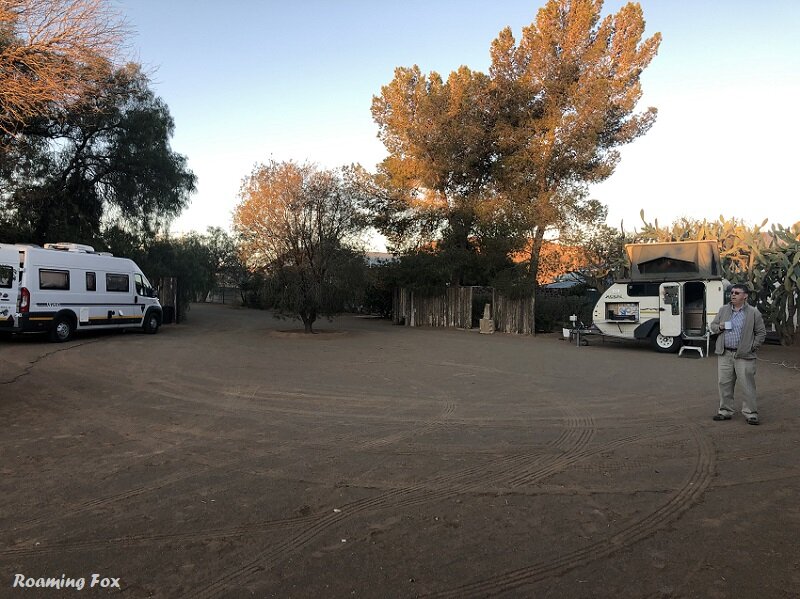

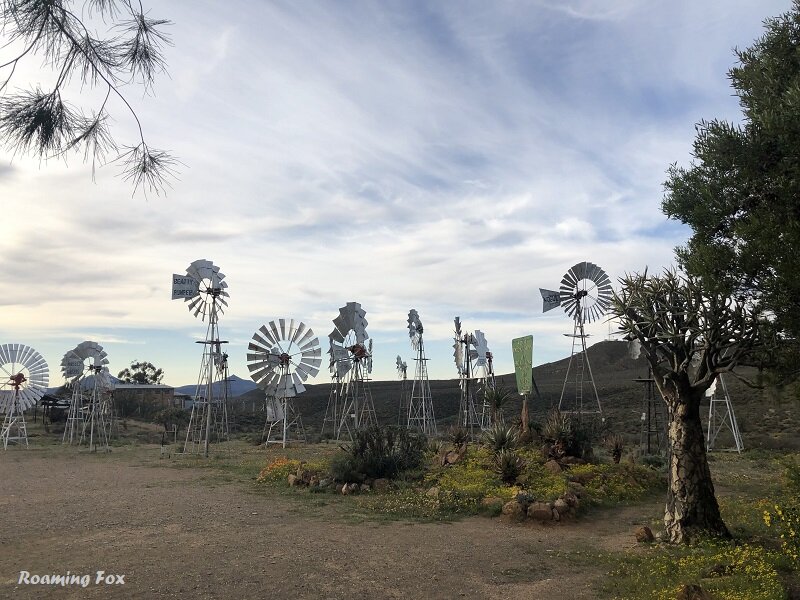

































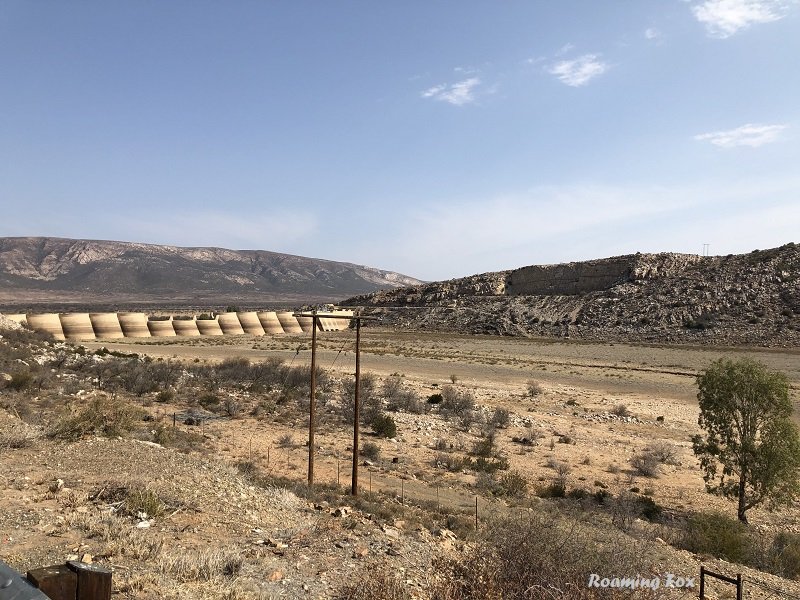


























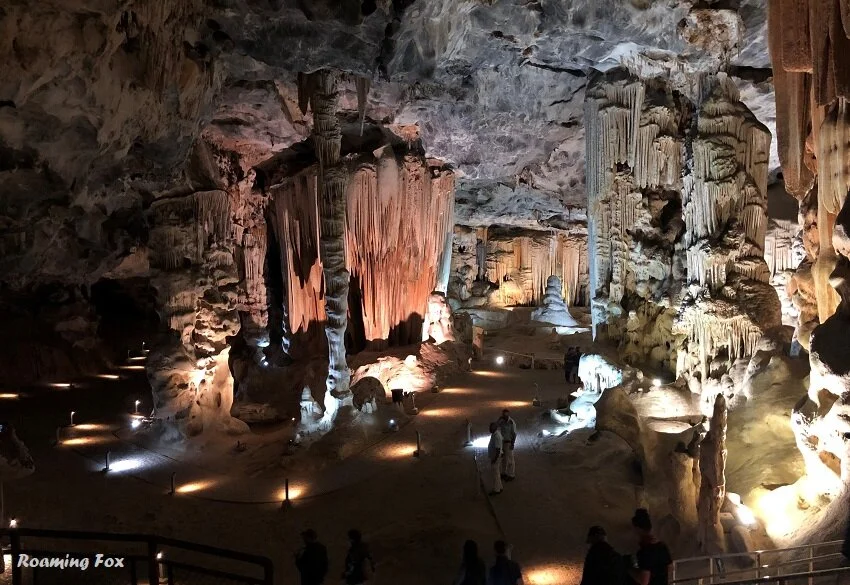
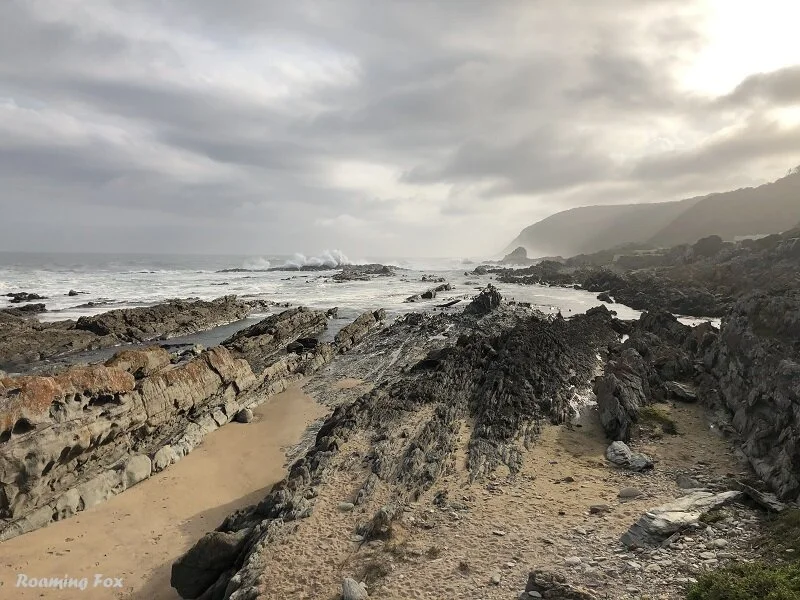
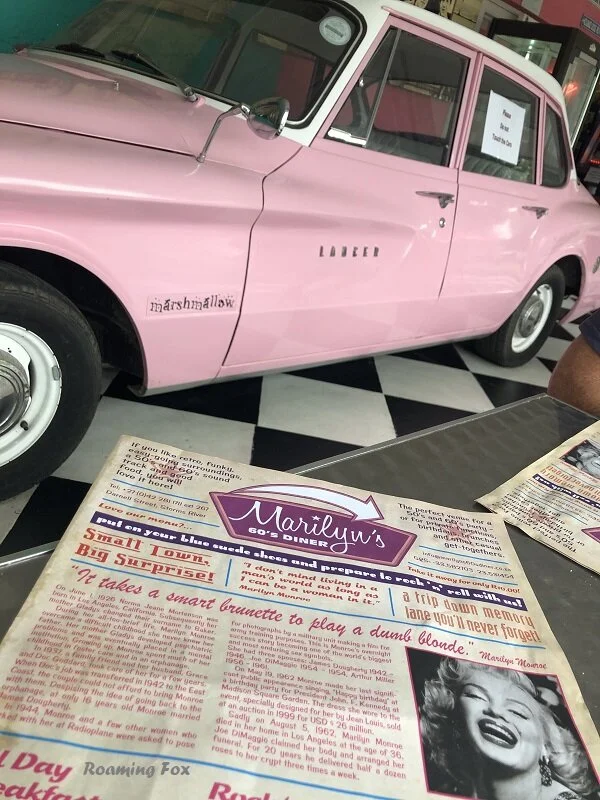
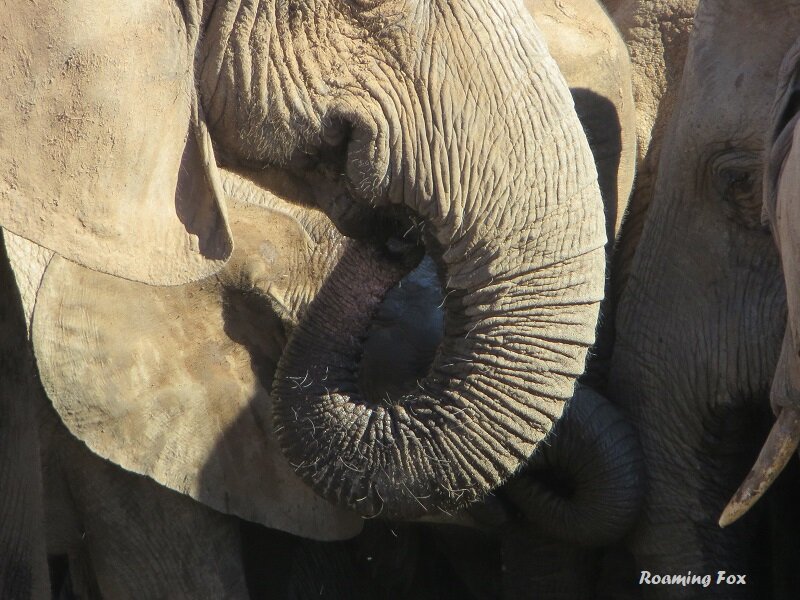
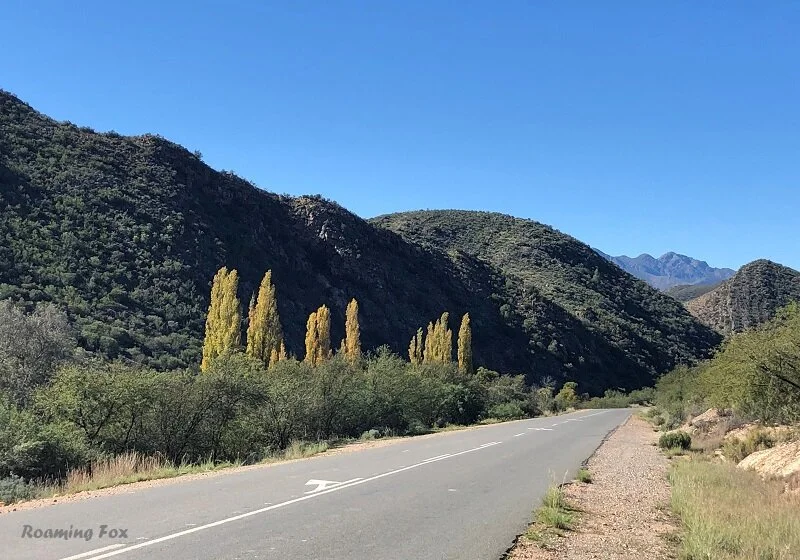


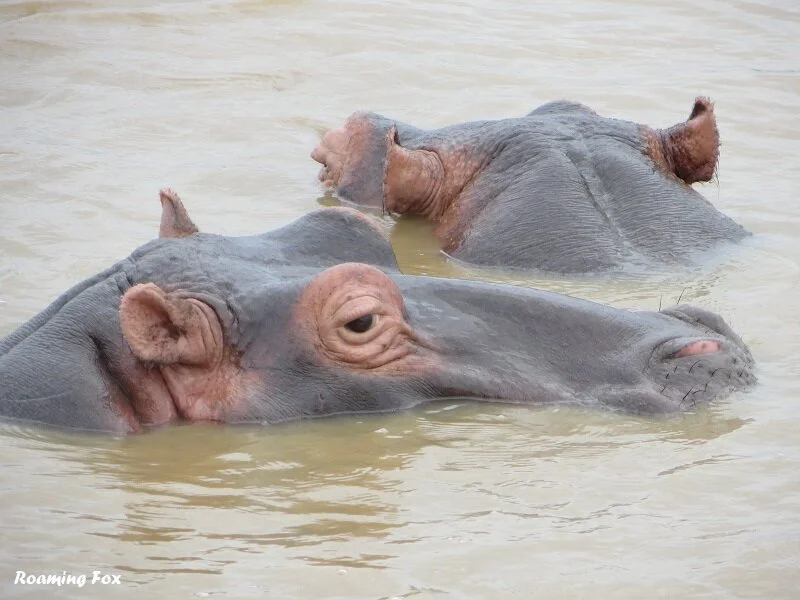
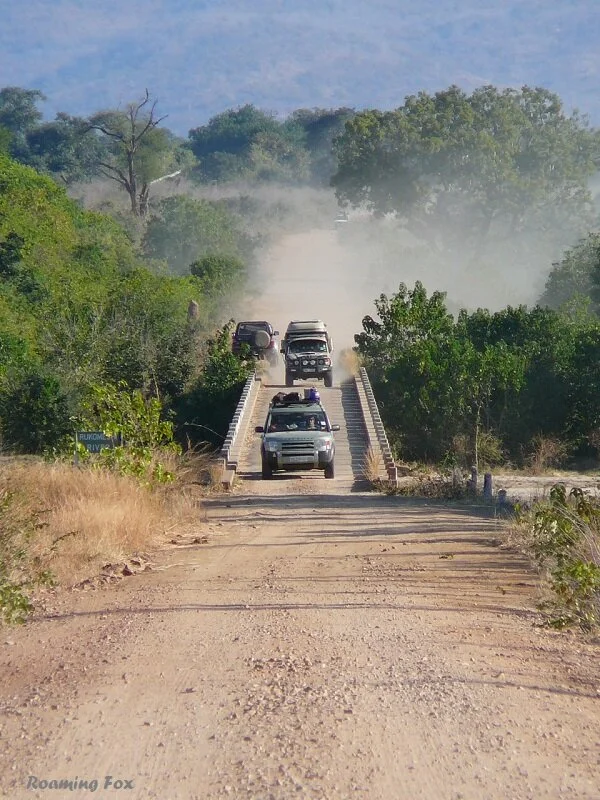


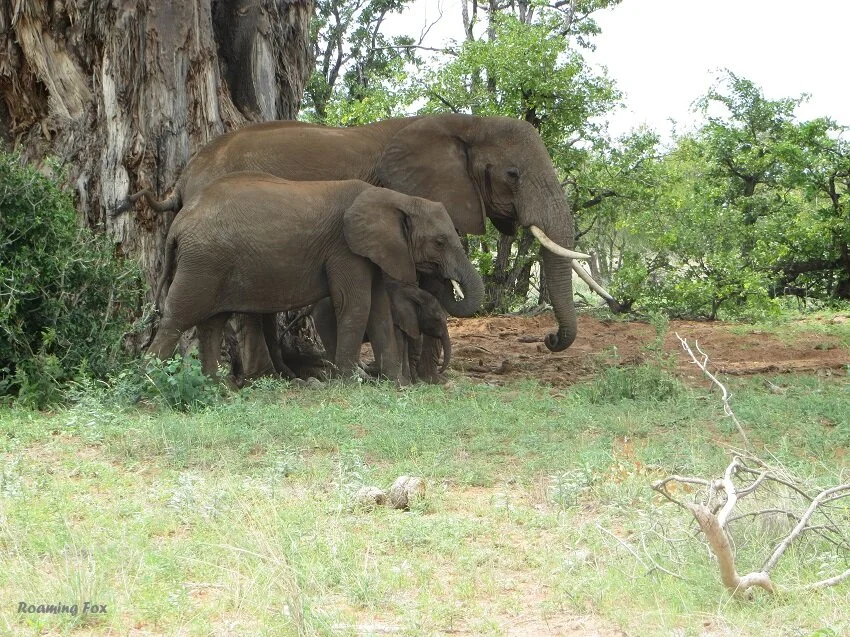
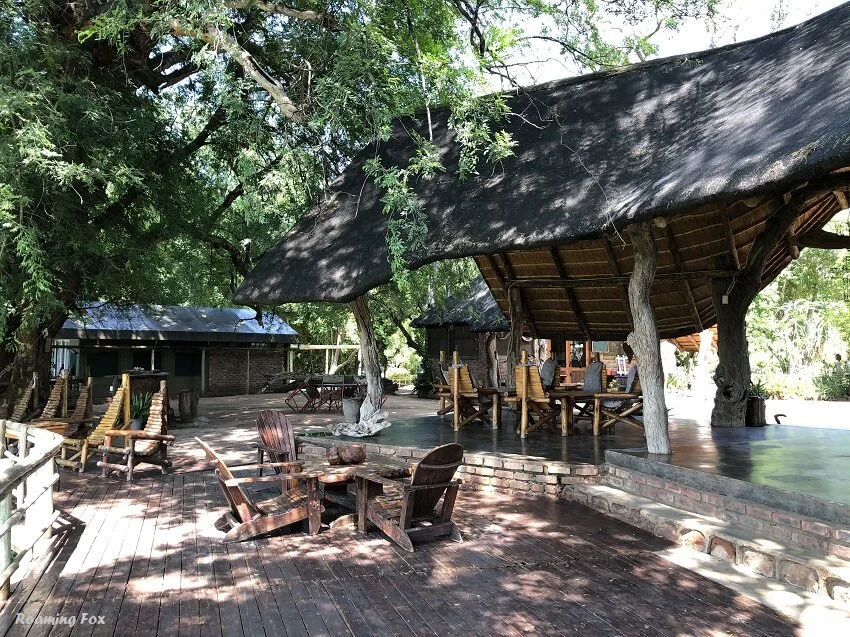





The Best Way to see a country? Take a road trip! Have you ever had that feeling when you hit the open road on your road trip? Freedom. Anticipation. Exhilaration.